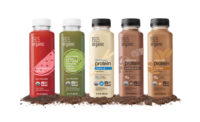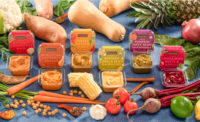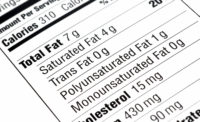As millennials, moms and millennial-moms become a larger market, their preferences naturally become a top priority for the food and beverage industry. In fact,  millennials just overtook the baby boomers as America’s largest demographic group. These adults, between the ages of 18-34, are now the primary focus for marketers and product developers. They want products with “clean labels” that include words like all-food, organic and local vs. retort jars of baby food, canned green beans and preservative-laden processed foods.
millennials just overtook the baby boomers as America’s largest demographic group. These adults, between the ages of 18-34, are now the primary focus for marketers and product developers. They want products with “clean labels” that include words like all-food, organic and local vs. retort jars of baby food, canned green beans and preservative-laden processed foods.
That’s why today’s cold food manufacturers are looking in the technology sector to improve their portfolios and flavor profiles.
It may seem counterintuitive for technology to play a role in clean label products, but in fact, it plays a central role. To succeed in the market, producing consistent, good-tasting products with necessary shelf life, manufacturability and cost has become a major challenge. Technology advancements in chemical-free processing, formulation and advanced packaging are core to meeting this challenge.
Technology solutions are required in every step of food production, even for all-natural foods. Methods of getting fresh food to the table require the use of both new and not-so-new technologies. For example, refrigerated storage and transport are obviously important, but can be considered to be old technologies. Newer technologies, including advanced packaging materials, high-pressure processing and aseptic processing, chemical-free package sterilization and new formulation tools such as advanced filtration, all play a role in meeting the needs of today’s millennial customer.
Improving shelf life
A key element limiting shelf life in today’s cold foods and beverages is spoilage due to bacterial growth or enzymatic activity. One market segment enjoying strong growth is aseptically packaged dairy products. In North America, aseptic packaging of beverages is growing at over 13% per year and is projected to continue this way for the foreseeable future. This processing technology, when combined with advanced packaging materials (e.g. multi-layer HDPE bottles with an embedded EVOH oxygen barrier layer) can deliver all-natural, preservative-free, protein-rich products with shelf life greater than one year. This segment, already large in Europe, is hitting critical mass here in the United States with dairy and non-dairy products (for example protein drinks) becoming one of the most innovative and fast-growing market segments in beverage.
Another important technology enabling extended shelf life is high-pressure processing (HPP). Through a batch process, HPP has enjoyed considerable adoption because of its low-temperature method that eliminates the potential for heat damage. In fact, the industrial production and distribution of guacamole is fundamentally enabled by this low-temperature process.
Chemical-free sterilization of packaging materials is also available. For decades, older technology (energy delivered in the form of Gamma radiation) has been used to sterilize food packaging. For continuous production systems, however, Gamma isn’t an option. Most continuous production lines sterilize packaging by using chemicals such as peracetic acid or hydrogen peroxide. Some of today’s aseptic packaging manufacturers are commercializing filing equipment that sterilize food packaging using energy (electron beams) rather than chemicals, thus reducing water usage and eliminating the risk of chemical residuals.
Advanced filtration techniques are also an important tool for today’s R&D teams. Filtration techniques spanning the gamut from relatively unsophisticated membrane scale filtration systems to advanced nanofiltration and reverse osmosis systems make it possible for manufacturers to separate natural food components using physical techniques (not chemical). Food components can then be re-combined to create innovative products based solely on natural ingredients.
The advances in food packaging have and will continue to produce some of the more impactful breakthroughs in our industry. These advancements span oxygen and moisture management to light-weighing, easy-tear pouches to oxygen, odor-scavenging plastics and more.
Given all of the innovation by scientists and engineers throughout the supply chain, the food industry is well positioned to deliver the all-natural, preservative- and chemical-free products that this new demographic group is now demanding. Making products that are natural, nutritious and tasty, but also manufacturable, distributable and profitable is a daunting task. It’s a good thing nobody was asking for this stuff 20 years ago….



